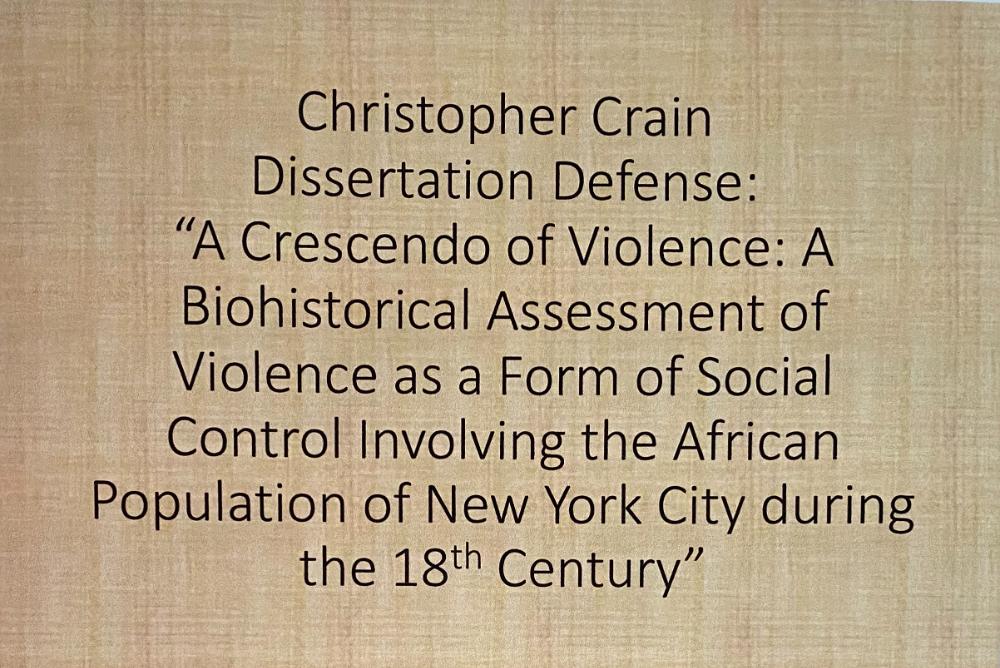Arts & Sciences Events
[PAST EVENT] Anthropology Dissertation Defense: Christopher Crain, An Assessment of Violence as Social Control
Location
Zoom
From Christopher's precis: "Sometime during the middle of the 18th century, a young African woman (Burial #25), most likely enslaved, was severely beaten and shot in the back in the city of New York. Her remains' analysis suggests that she did not die right away but may have lived for a few days after the crime. While this is one of the clearest examples of intentional violence on a member of this marginalized community, in all reality, it is a cold case that is 300 years old. Like this young woman, 58 other African Burial Ground individuals exhibit one or more fractures. Some have several fractures, but whether these result from an accident or intent is sometimes unclear since the mechanism of skeletal fracturing can be similar no matter the outcome. During the 18th century, New York City was developing rapidly, and it required a significant source of labor to keep pace. The solution, like the century before, was to increase the forced migration of enslaved Africans. The growth in this population, as one would expect, needed a system of control that would maintain the status of the growing English mercantile class. The intricate system of violence evolved various physical, structural, and cultural components to accomplish this goal. This research sheds light on this system of control. Using Galtung's theoretical construct, the Triangle of Violence, this research revisits the fracture data from the African Burial Ground pathology database along with available historical documentation of New York colonial statutes, Common Council ordinances, and newspaper advertisements. The goal was to determine how the three types of evidence reflected the changing level of violence directed towards the city's enslaved African population. All four of these sources provided information about the interplay between the physical, structural, and cultural forms of violence and how they reflected the growing tensions and hostility of free colonists after the century's significant historical events."
Please email Joni Carlson [[jdcarlson]] for Zoom link.
Contact
[[jdcarlson]]
